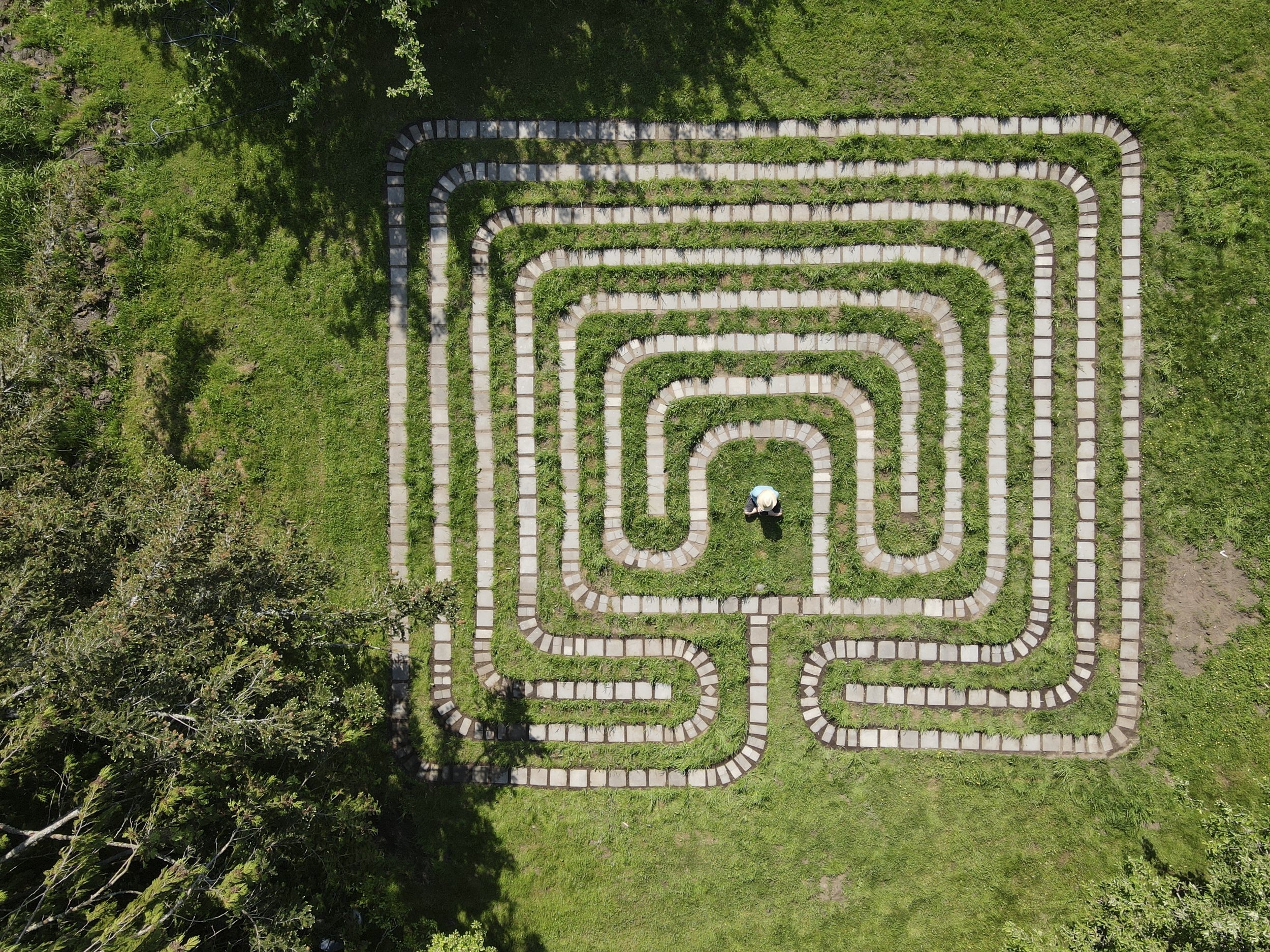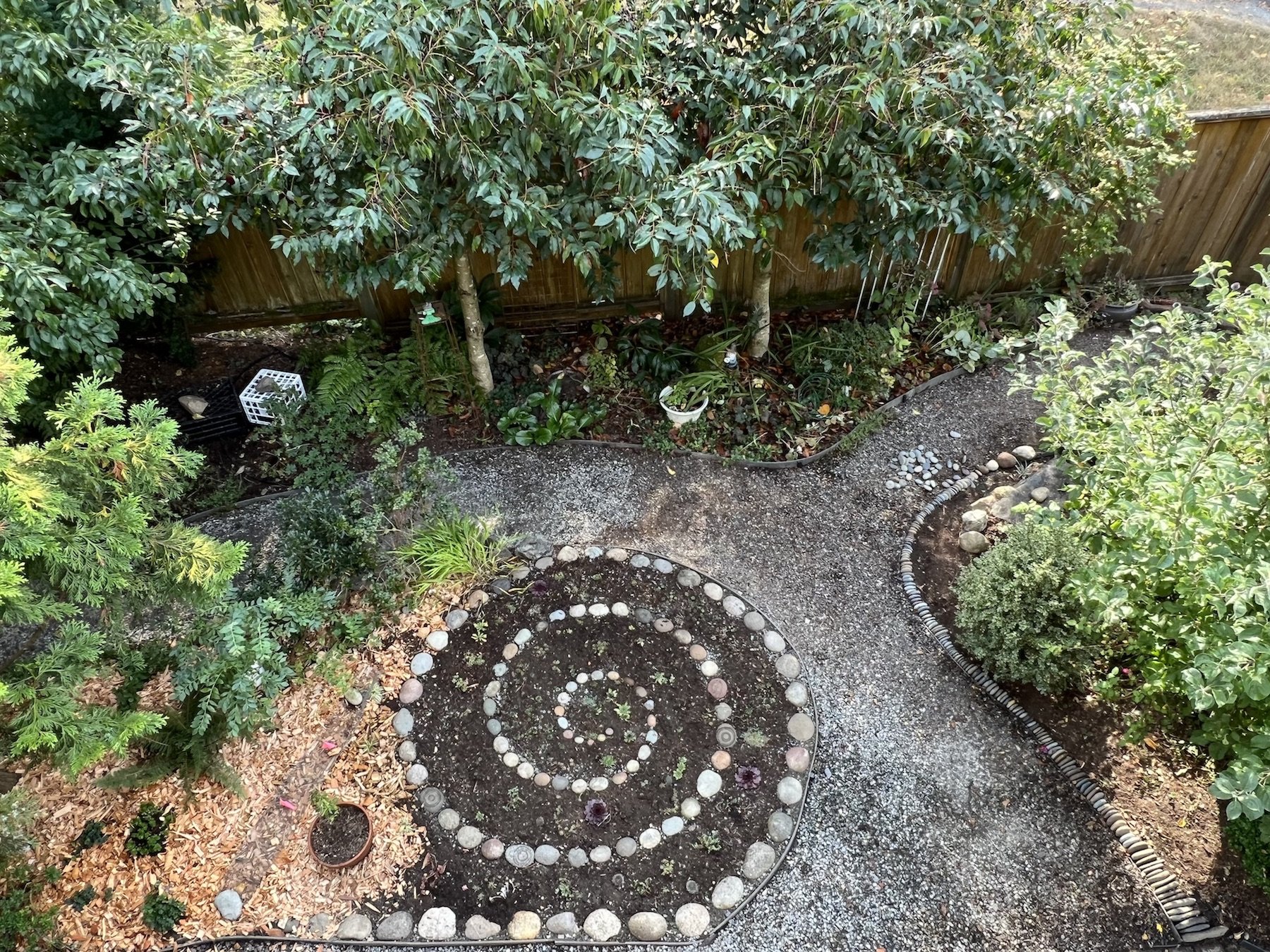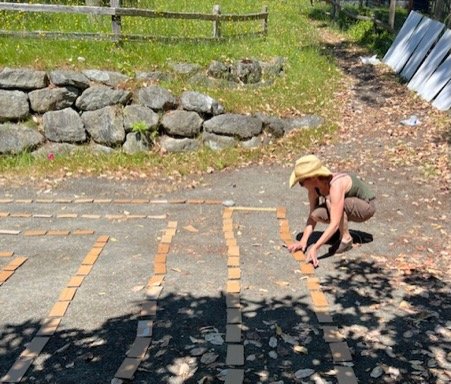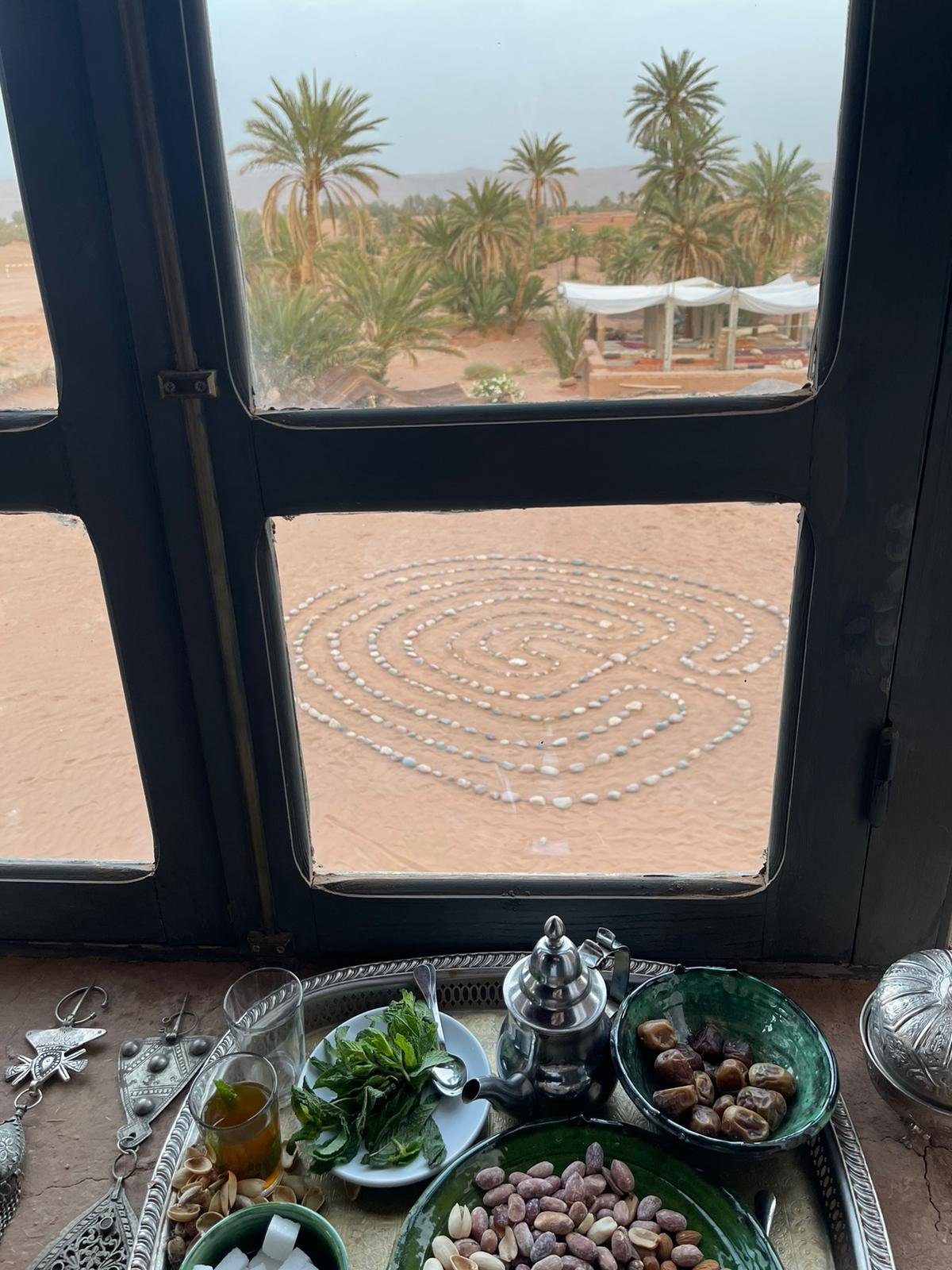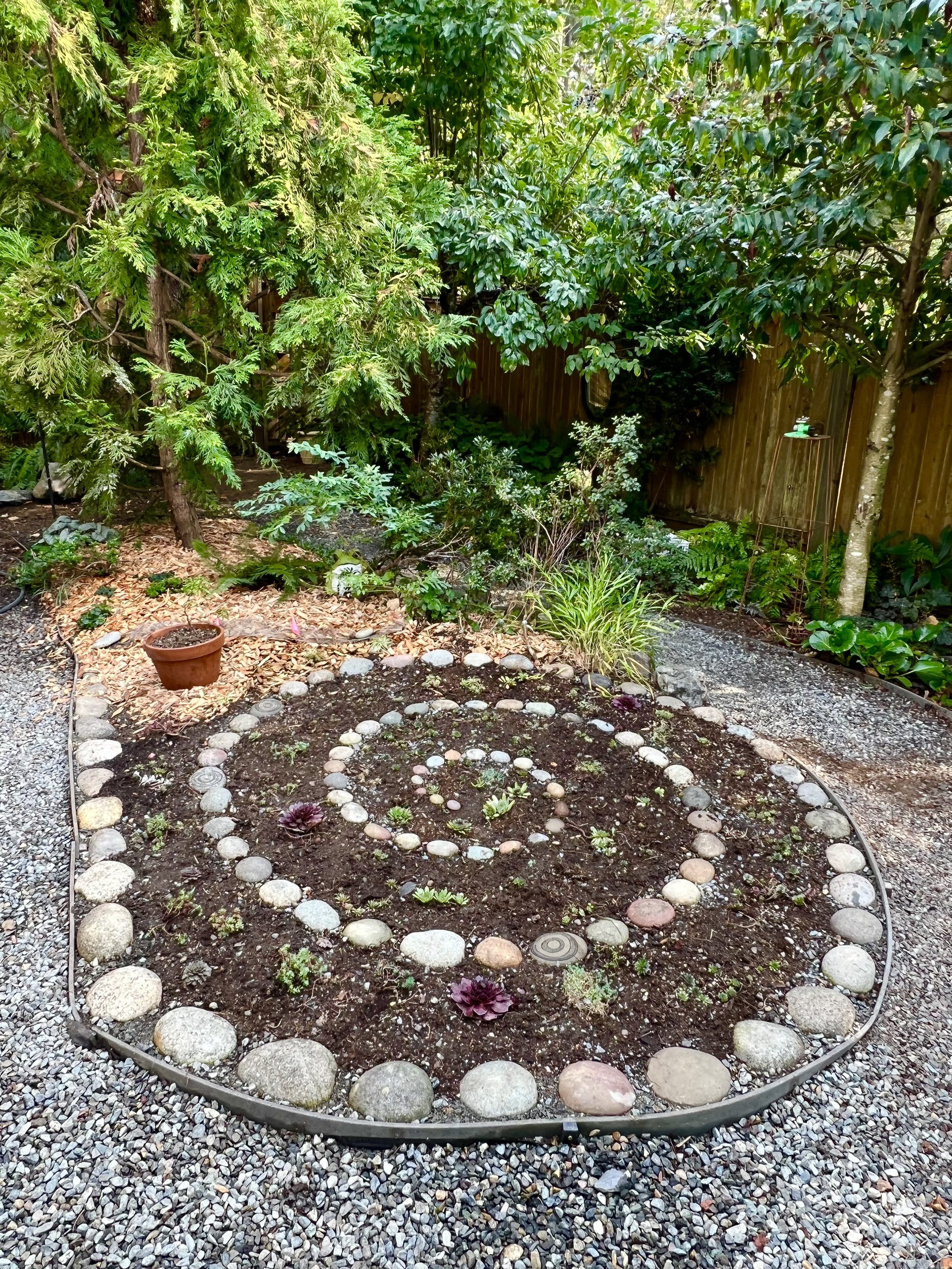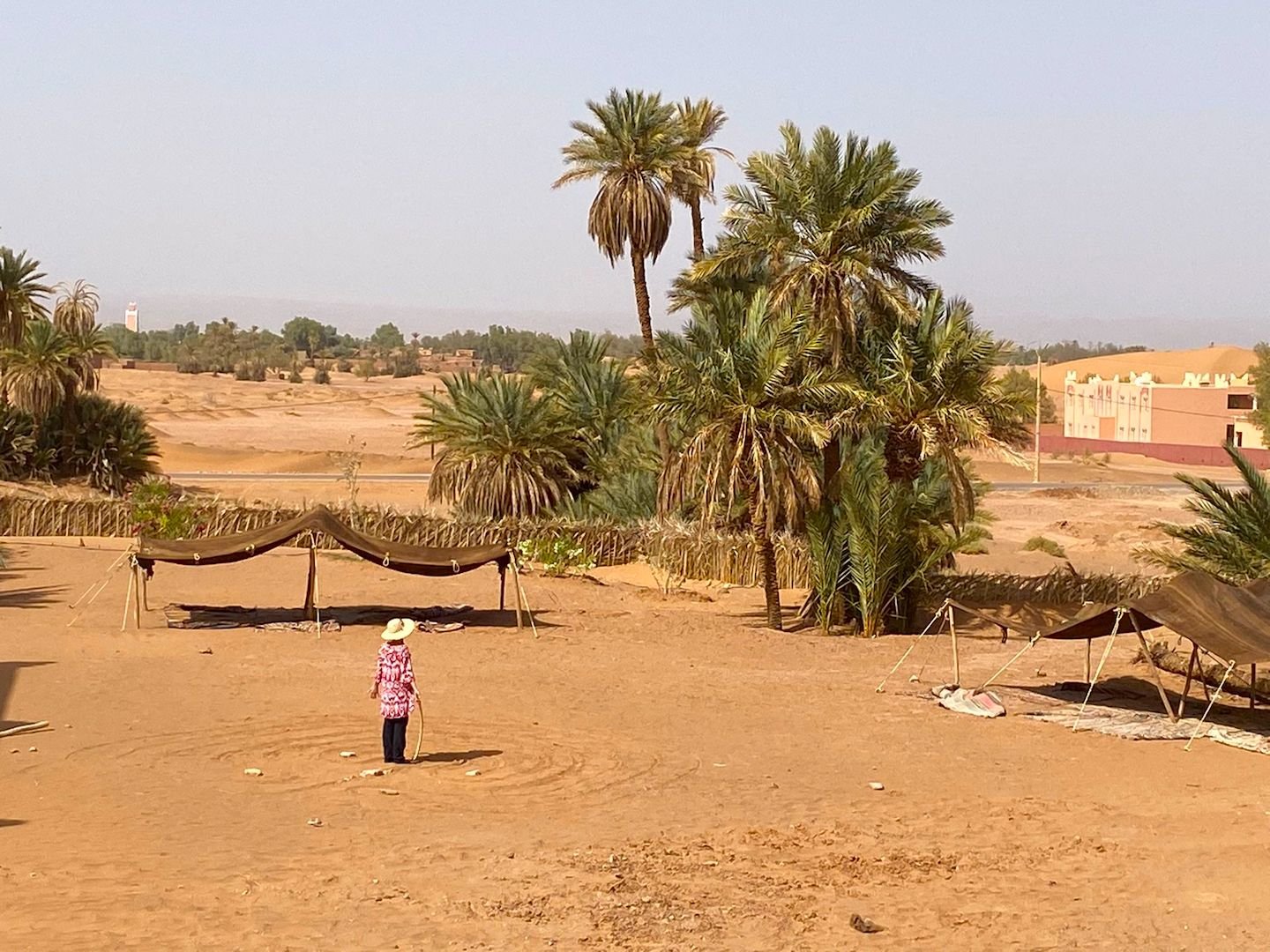Ever thought about a temporary or permanent labyrinth for your home, event or retreat center?
A temporary labyrinth for retreat installations, something permanent for your backyard or facilitating a unique 1:1 labyrinth experience, I’m available to come to you just about anywhere in the world. For those of you concentrated in the Pacific Northwest, I’ll happily hop in my car.
A key component for the labyrinths I create is the combined power of Healing Stones and the elements, whether it’s incorporating them into the seasonal ritual or as part of the labyrinth itself.
Let’s bring a beautiful, walkable, and sustainable labyrinth into your life.
A dynamic and meaningful addition to home gardens, retreat centers and gatherings, spirals and small labyrinths are perfect for sparking flow or holding space for seasonal rituals and special occasions.
Already know what you want or have an idea? Tell me all about it!
Sedum Equinox garden spiral with river rock edging Private Home, Bellingham, WA
Things to Consider Before Building a Labyrinth
Building a labyrinth can range from temporary land art to a significant undertaking, ranging in size from 6’ to 60’. At their most complex, they require an extensive amount of planning, preparation and dedication. Below are several critical factors to consider before beginning your labyrinth journey:
Site: Where and how will the labyrinth relate to the environment? What’s the orientation and purpose? Quiet, peaceful, and relatively secluded areas often come to mind; they’re also an unexpected and grounding experience at festivals and celebrations.
Intention: Why create the labyrinth? Will it be temporary or permanent? Labyrinths serve as both personal reflection and meditation as well as community connection and celebration. Who will experience your labyrinth? What energy will be infused or what do you hope it will evoke?
Materials/Resources: What look and feel are you seeking? How durable does it need to be? Stone, brick, wood, water and plants are beautiful considerations for permanent structures.
Size: A labyrinth can be as big or as small as your imagination. From intimate backyard projects to extensive installations covering several acres (see below for examples), your available space and budget are the primary factors when determining a suitable size.
Design: Labyrinths come in many forms and designs, from intricate geometrical patterns to naturalistic layouts using existing terrain. Often times, less expensive options require more maintenance and care to ensure longevity. We’ll take a look at the overall purpose of the labyrinth and design to support this purpose.
Budget: Many factors come into play when determining budget: size, design, materials, and terrain to name a few. An important consideration is whether or not you’ll be relying on volunteers/the community for planning and construction? Is there a strategy or timeline for completion? It’s also important to consider ongoing maintenance such as cleaning, weeding, and possible repairs.
Accessibility: If this is a community or public labyrinth, consider the needs of all potential users, including those with mobility challenges or disabilities.
Sustaining: What is the expected lifespan of your labyrinth; who will ten to its health and vitality. Will there be regular maintenance? How will the labyrinth be kept “alive” - monthly moon walks, personal meditation, dance parties… Depending on material, climate, and frequency of an energetic exchange, the labyrinth will season differently.
By thoughtfully considering these factors, you’ll be well-prepared to begin your labyrinth journey in creating a beautiful and meaningful space for yourself or your community.
SIZE
39’ x 42’, landscape pavers, west-facing Bow Sanctuary, Bow, Washington
10’-24’ - small: 3-5 circuits (paths), decorative, children, backyard, low mobility
24’-36’ - medium: 5-7 circuit, most common and smallest recommended size for meditative qualities
36’-45’ - large: 7-11 circuit, wellness centers, Chartres cathedral replicas
45’-60’ - xlarge: 11-15 circuit, centerpiece, large groups
60+ - monumental: unlimited, landmark trees, hedges, lavender
Path width, materials, and center diameter determine the overall size
Path width affects focus and pace, center diameter affects group experience
Humble Beginning
I instinctively built my first labyrinth in the desert of Morocco in April of 2022. I went on to manage a successful Kickstarter campaign and raised enough funds to build another in the harsh desert of Black Rock City several months later. I’m happy to report that labyrinths continue to present themselves to me, asking to be built by way of both natural and found materials.
20’ x 22’, east-facing stone labyrinth, Aitisfoul, Zagora, Morocco, photo credit: Anahata Joy
“Thank you for my labyrinth tile. It is so wonderful and beautiful. I love knowing the spirit it was created and how it contributed to your project. I have it in my office, so when I’m feeling down or lackluster, it gives me a hint of inspiration.”
Custom design, hand-drawn labyrinth tile
Sedum garden spiral
“… an honoring of the earth. It (succulent garden spiral) was too much for me to accomplish alone, but with your wisdom, magic was created! I now have a piece of that fairy garden energy in my own garden.”
“You are doing beautiful work in the world. Your magic is palpable and far reaching. Keep going.”
Marking-out the labyrinth, Zagora, Morocco

